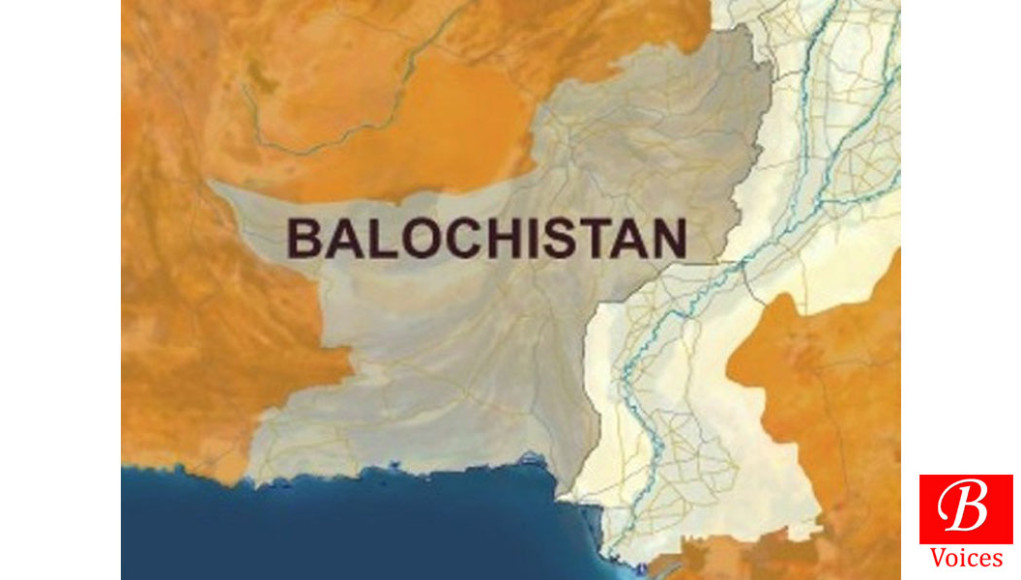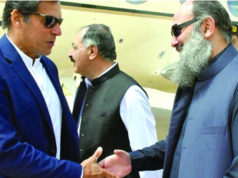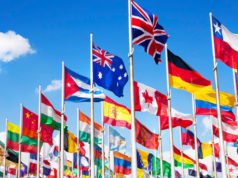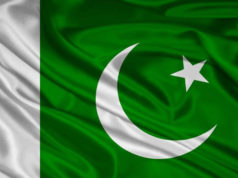 Nawaz Ahmed
Nawaz Ahmed
Balochistan, got the status of province in 1970 after rescindment of one Unit. This is the land of rich culture and diversity where the oldest civilization of about 7000 years is found at Maher garh, District Kechi. It’s awesome geographical location—Afghanistan in north and northwest, Iran to the south west and the Arabian sea to the south, has always made it centripetal to world focus since ages. Moreover, the province is replete with land and sea resources and home to countless tourism spots stretching over from East to West and North to South that contribute to make it further beautiful.
To begin with the mineral wealth, there are plenty of precious minerals lying all over Balochistan and among those the most prominent are Lead- Zinc (found in Khuzdar and Lasbela), Coal (Quetta, Sibi, Harnai, Mach, Duki Chamalang), Iron (Chagai and Mastung), Marble (Khuzdar, Kalat, Loralai, Zhob, Chagai, Ziarat), Barite (Lasbela Khuzdar, Chagai), Chromite (Muslim Bagh, Killa Saifullah, Khanozai, Pishin), Limestone (Lasbela, Coastal area, Chagai and Zhob). Furthermore, the mining sector, with huge reserves of copper and gold reserves at Sandak and Rico Dik, with a cumulative quantity of about 5.9 billion tons of copper and gold is always in the news.
Improvements in the existing mining practices, use of latest technology, safety of miners to minimize life risks and provision of easy access to the market through road networks may enhance the production capacity of this sector and can bring it at par with international standards.
With huge land mass, largest of all the provinces (about 44%), Balochistan has also great potential for agriculture and horticulture. The major areas suitable for agriculture include; Naseerabad and Sibi, Harnai, Dhadar, Khuzdar and Lasbela famous for cultivation of wheat, rice and vegetable. Similarly, Killa Saifullah, Ziarat Pishin, Kalat Mastung and Killa Abdullah are largely contributing in horticulture with amazing varieties of apple, cherry, plum and apricot. Similarly, the Mekran region is famous for different variety of dates. Use of modern irrigation techniques, preservation of rain water, cultivation of low delta crops, introduction of genetically engineered seed varieties, farm support systems and other related incentives can help in developing this sector increasing the annual production.
Side by side the role of livestock cannot be ignored. The long-extended mountain ranges and existence of rangelands make it suitable for livestock production. Livestock rearing has been one of the oldest professions that the people of this region have been attached with from the very beginning. As a major proportion of population till lives in rural areas, they mainly depend on agriculture and livestock as the main source of their livelihood. The livestock breed of Balochistan includes Goat (Kajli, Khurasani, Lehri, Sulemani and murak), Sheep (Kakari, Balochi, Bevergh, Harnai, Rakhshani, Dumari, Bybrik, Shinwari and Mengali), Camel (Kohi, Kharani, Raigi and Pahwali), Cattle (Baghnari and Red Sindhi). One of the complementary aide of livestock development is the existence of rangeland, and Balochistan, to some extent enjoys this bounty. The rangeland of Balochistan is classified into Central Balochistan Range; which includes Quetta, Kalat, Mastung, Killa Abdullah, Pishin and Killa Saifullah, The Western Balochistan Range; comprising of Kharan, Washuk, Chagai, Nushki, Kech and Panjgur, The Eastern Balochistan Range: encompasses Zhob, Loralai, Musakhel, Barkhan, Kohlu, Sibi, Dera Bughti, Naseerabad, Khuzdar, and the Suleiman Mountain Range covering north-eastern and west parts of Sherani, Zhob and Musakhel District and the areas bordering with Afghanistan, FATA, KPK and Punjab. This range has plenty of annual rain fall. Micro credit and interest free loans can help in promoting livestock production and business in rural areas with subsequent impact of food security and poverty reduction.
Proceeding further, the fisheries sector deserves a special touch. The long coast of more than 700 KMs is witness to the huge fish reserves of Balochistan and this is one of the key strengths of economy if properly harnessed. The main fishing areas are Pasni, Gwadar, Sur Bandar, Pishukan, Ormara, Damb, Gaddani and Jiwani. Major chunk of population living along the coast is engaged with this profession. But it is an unfortunate fact that the small fishermen are living a miserable life. Their precarious financial position does not allow them to have a better luck. They are using very old and outmoded fishing techniques which make it very hard for them to catch that much fish beyond their daily subsistence needs to have some savings and upgrade their fishing tools. Whatever is caught after a daylong hardship meagerly suffices their own consumption needs, not to mention of taking the surplus to the market. A little financial assistance and logistic help, protection against the exploitation and proper training on latest fishing techniques can help them well to come out of this misery.
Now turn to industry. It is beyond doubt that industry is key to development and economic growth. After the industrial revolution, commencing from Britain finding its way towards Western Europe and lately to rest of the continents prompted the world to shift from agriculture to industry. The countries and continents readily went for industrialization and kept on climbing the ladder of economic growth and rapid urbanization.
In the context of Balochistan, Lasbela has been the only Industrial District of the Province and somehow, few small industries in Quetta. However, after construction of Gwadar Port and launching of CPEC the need of industrialization started gaining prominence and apart from Gwadar and Lasbela Industrial Estates, Special Economic Zones (SEZs) have been established which envisage setting up of industries for fruit processing, agriculture machinery, motor bike assembling, chromite refinery, cooking oil, ceramic, electric appliances and halal food.
These are some positive moves in the right direction, however more efforts are needed to encourage and promote small industries at village and households level to generate economic activities enabling the rural population to stand on their own feet. Carpet weaving and embroidery are the areas where such interventions could be successful.
Like other sectors, Balochistan has huge potential of solar and wind energy generation. The mounting threats of environmental degradation has forced the world to go for the alternative and clean energy generation abandoning the conventional sources. Likewise, Pakistan has to abide by the same protocols. Solar is abundantly available Balochistan and the sun rays are very high with a radiation of 5.9-6.2 KWh/Sqm, augmented by the average daily global insulation ranging from 19-20 million joules/m2 with sunshine duration of 8-8.5 hours. Apart from Solar, the high-speed wind in certain parts of the province have the capacity to produce wind energy. Winder, Ormara, Jiwani, Dalbandin, Nokundi and Taftan are hailed as potential wind corridors.
Moving further, tourism also stands at top of the list of potential avenues. This is one of the most flourishing industry, a major contributor to GDP and foreign exchange earnings. Now a days the countries are in fierce competition to attract maximum number of tourists each year and this trend is pushing them to ease the visa requirements and introduce incentives and packages for tourists. Like other parts of the country, Balochistan has plenty of tourist attractions, if properly development and managed will bring bounties each year. Damb, Hingol, Kund Malir, Sapat, Astola, Ormara, Jiwani, Peshukan, Ziarat are some of the main tourism resorts. These places just need some investment, preferably through public private partnership.
Last but not the least, Balochistan is bestowed with substantial human resource. As per the latest census and according to the Pakistan Bureau of Statics, about 19.5 percent of population is between 15 and 29 out of the total population 12.5 million. It is pertinent to mention that the youth of Balochistan is quite genius. This can be witnessed from the fact that despite having their basic education—primary and middle from the most backward districts like Musakhel, Sherani, Awaran, Dera Bughti, Barkhan, Washuk they can compete and qualify the most competitive exams amidst fierce competition from the strongest competitors at the country level. If invested and provided with needed skills and quality education, the youth of Balochistan can prove a valuable asset for the province and the country.
The above depicted potentials could be harnessed and their productivity is reaped only if these are properly planned, developed, managed and integrated through a good network of internal and inter provincial roads and physical infrastructure. The projects such as Zhob Dirgai Shabozai to Tounsa Road (95.5 KM), Turbat Buleda Road (19.12 KM), Panjpai Ghazaband to Gulistan (60 KM), Sohbatpur to Kashmor road, Turbat to Pasni road, Mekhtar to Chamalang road, Dhadar to Gandawa road (30 KM) and Zhob Mir Ali Khel-Kajhuri road (91 KM) can assuage to some extent but still a lot more has to be done.
The writer is a Chief of Section at the Planning and Development Department of Balochistan.
Disclaimer: Views expressed in this article are those of the author and Balochistan Voices not necessarily agrees with them.
Share your comments!








